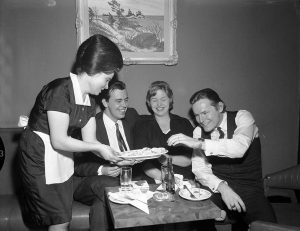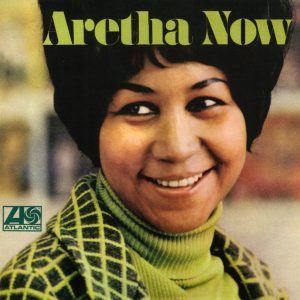I scan several “This Day in Music”-type sites — rock, country, jazz, even classical — when stumped for a blog topic. Today, a country version said that on February 14, 1950, Red Foley released “Chattanoogie Shoe Shine Boy,” a western swing-tinged country number that was the first country song to earn a spot on the pop music charts. In fact, according to the notes at the YouTube posting, it spent 15 weeks on Billboard’s pop chart and reached number one.
That’s not unimportant and Red Foley, who was a big country star in the 1950s, should be covered by The Daily Music Break. So it seemed like an easy decision. The song is good. It has strains of “Chattanooga Choo Choo,” which was a huge 1941 hit for Glenn Miller and His Orchestra.
There is a problem, however. Both songs have the latent strain of racism. They are subtle that. It’s unfair to blame the artists (or the song writers), who were writing and singing at that particular moment in history. At the same time, it is important to acknowledge. Indeed, there are several things to acknowledge. The first is that there is no overt racism in the songs. It is never stated that the person shining shoes is African American. The closest is the opening two lines of “Chattanooga Choo Choo”:
Pardon me boy, is that the Chattanooga Choo Choo?
Track twenty nine, boy you can give me a shine
That’s pretty clear, though it is possible – not likely, but possible – that the traveler was addressing a young white man. What has always struck me is that little bit of racism is a part of a cherished American song that is so familiar to so many people that it doesn’t raise an eyebrow.
The Red Foley song starts this way:
Have you ever passed the corner of Fourth and Grand?
Where a little ball o’ rhythm has a shoe-shine stand
People gather ’round and they clap their hands
He’s a great big bundle o’ joy
He pops the boogie woogie rag
The Chattanoogie shoe-shine boy
It goes on like that. Again, it is not impossible to argue that the reference is to a white kid. We all sort of know that it isn’t, however. It’s also possible the writer was referring to an adult African-American.

The way of condescending to African Americans in that age – especially young ones and especially in the south – was insidious and so ingrained and natural that it didn’t even need to be overtly mentioned. It was baked in.
Clyde Julian (Red) Foley lived from 1910 to 1968. Wikipedia says that he was a major contributor to the growth of country music after World War II. He sold more than 25 million records. His 1951 song, “Peace in the Valley” was one of the first gospel songs to sell a million records. From 1955 to 1960, Foley hosted “Ozark Jubilee,” which the profile says was the first country music television programs to become popular.
Wikipedia runs through Foley’s career, which kicked off in about 1930. It includes an interesting and poignant description of the night that he died. Hank Williams Jr. was there and wrote a song about the event. Foley was an influence on Jerry Lee Lewis and Elvis Presley, who both covered several of his songs. Perhaps most famously, Presley had a hit with the Foley song “Old Shep,” which was about his dog. That song also was covered by Hank Snow. Foley has two stars on the Hollywood Walk of Fame. One is for his singing and the other for his career in television.
Alan Cackett offers deeper background on Foley. It’s not all a pretty picture. He writes that Foley’s image as a God-fearing man was a bit of a façade. His second wife committed suicide in 1951 after finding out that Foley was having an affair with a woman who later became wife number three. He was a heavy drinker and sunk into a depression as his popularity waned in the 1960s.
“Chattanoogie Shoe Shine Boy” is above and “Birmingham Bounce” is below. The guitar player in both is Grady Martin, who also is in the Country Music Hall of Fame. By chance, his image is captured on the YouTube below. The video from the latter is from the Ozark Jubilee and was recorded on September 17, 1955.










Add Comment